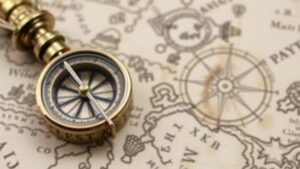Recovering Trade Items in Coastal Estuaries Used by Fishing Tribes
Recovering Trade Items in Coastal Estuaries Used by Fishing Tribes
Coastal estuaries serve as crucial environments that foster rich biodiversity and provide essential resources to local communities. Fishing tribes have historically relied on these ecosystems, not just for sustenance but also for various trade items that facilitate their economies. In recent years, the decline of these natural resources due to environmental degradation, overfishing, and climate change has highlighted the need for effective recovery strategies. This article delves into the tools, practices, and collaborative efforts necessary for recovering tradable items in coastal estuaries used by fishing tribes. It is structured to present an in-depth examination of the relevant topics while remaining accessible to a broader audience.
The Importance of Coastal Estuaries
Coastal estuaries are transitional zones between river environments and maritime environments, characterized by brackish water. They provide essential habitat for numerous species of fish and other marine organisms, serving as nurseries for fish larvae and juvenile habitats. According to the National Oceanic and Atmospheric Administration (NOAA), approximately 75% of the nation’s commercial fish catch, and 80% of recreational fishing catch comes from these productive environments.
For fishing tribes, estuaries represent not only a source of food but an economic hub where trade items such as shellfish, seaweed, and fish can be harvested. These resources form the backbone of local economies, enabling sustainable practices that have endured for centuries. But, the sustainable extraction of these items has become increasingly challenged.
Identifying Trade Items
Trade items in coastal estuaries can be broadly categorized into several groups, including:
- Shellfish: Species such as clams, oysters, and crabs play a significant role in both diet and trade.
- Fish: Varieties like salmon, flounder, and bass are critical for food supply and trade.
- Seaweeds: Valuable for their culinary and medicinal uses, seaweeds like kelp and nori also serve economic purposes.
- Marine resources: Items such as salt and other by-products are extracted for trade and local use.
The fisheries of coastal estuaries have demonstrated a cyclical nature in resource availability, influenced by ecological changes, fishing practices, and seasonal patterns. Understanding these dynamics is vital for addressing trade item recovery.
Challenges to Resource Recovery
The primary challenges to recovering trade items in coastal estuaries include:
- Environmental Degradation: Pollution from agricultural runoff, urban development, and industrial waste has degraded water quality, harming fish and shellfish populations.
- Overfishing: Unsustainable fishing practices have led to the depletion of key species, disrupting local ecosystems.
- Climate Change: Rising sea levels and ocean acidification are altering habitats and species distributions.
Collectively, these factors result in diminished yields of marine resources that fishing tribes have historically relied upon. For example, according to the World Wildlife Fund, between 1970 and 2015, global fish populations declined by 50%, underscoring the urgency of resource management and recovery efforts.
Strategies for Recovery
Recovering trade items in coastal estuaries involves a multifaceted approach, integrating traditional knowledge with modern scientific practices. Key strategies include:
- Community Management: Engaging local fishing tribes in resource management ensures that practices align with cultural values and ecological sustainability. Traditional practices like rotational fishing have been shown to rehabilitate populations.
- Restoration Initiatives: Projects aimed at restoring habitats, such as wetland restoration and reforestation of coastal mangroves, help improve water quality and provide nursery habitats for juvenile species.
- Regulatory Policies: Useing and enforcing sustainable catch limits and seasonal closures can prevent overfishing while allowing populations to recover. For example, the establishment of marine protected areas has shown marked improvements in fish populations.
Notably, the Puget Sound Recovery Plan in the United States has employed a combination of habitat restoration, pollution management, and tribal involvement, leading to improved shellfish populations and enhanced fisheries management.
Real-World Applications and Case Studies
Several successful case studies demonstrate the effectiveness of recovery strategies:
- Chesapeake Bay Program (USA): This initiative integrates local stakeholders with fishery management authorities, leading to the resurgence of blue crabs and oysters by implementing strict water quality regulations and habitat restoration projects.
- Coastal Restoration Coalition (Australia): This group works with Indigenous communities to employ traditional ecological knowledge alongside modern conservation techniques, successfully restoring several estuarine ecosystems and enhancing resource availability.
These examples highlight that with collaborative efforts and integrated strategies, recovery of trade items is not only achievable but also essential for the sustainability of coastal ecosystems and the tribes that depend on them.
Conclusion: Actionable Takeaways
As the challenges facing coastal estuaries continue to evolve, it is imperative to prioritize the recovery of trade items essential to fishing tribes. Effective management can be achieved through:
- Incorporating local and traditional ecological knowledge into modern resource management practices.
- Useing community-based management strategies that promote sustainable fishing activities.
- Investing in habitat restoration projects to enhance ecosystem resilience.
By prioritizing these strategies, stakeholders can ensure that coastal estuaries remain productive and alive, supporting the cultural and economic livelihoods of fishing tribes for generations to come.


